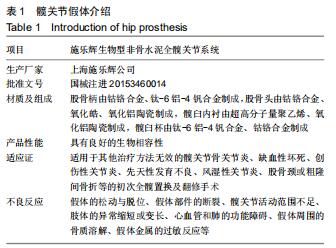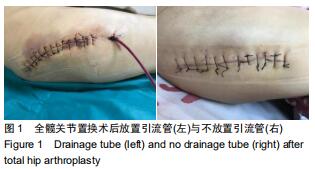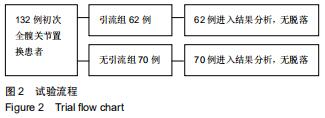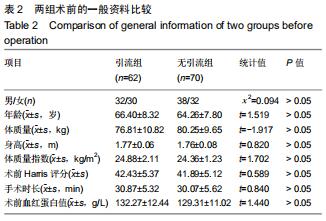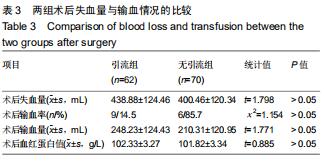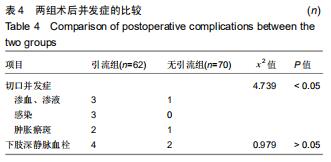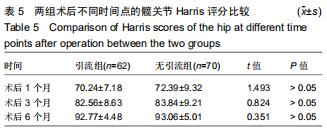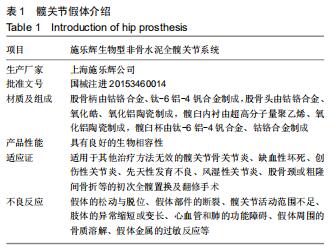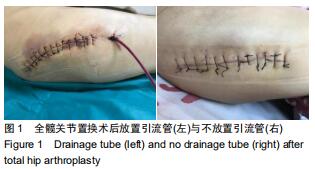|
[1] 王晖,张亚洲,时莉芳.骨小梁结构髋臼杯和实体结构髋臼杯的三维模型仿真分析[J].中国组织工程研究,2020,24(3):390-394.
[2] ZHANG WC, TANG N, LI XP, et al. The top 100 most cited articles on total hip arthroplasty: a bibliometric analysis.J Orthop Surg Res.2019; 14:412.
[3] BEHEIRY HE, LUBBERDINK A, CLEMENTS N, et al. Tranexamic dministration to older patients undergoing primary total hip arthroplasty conserves hemoglobin and reduces blood loss.Can J Surg. 2018;61(3): 177-184.
[4] GAO F, SUN W, GUO W, et al. Topical Application of Tranexamic acid Plus Diluted Epinephrine Reduces Postoperative Hidden Blood Loss in Total Hip Arthroplaty.J Arthroplaty.2015; 30(12):2196-2200.
[5] MIN JK, ZHANG QH, LI HD, et al. The Efficacy of Bipolar Sealer on Blood Loss in Primary Total Hip Arthroplasty: A Meta-Analysis. Medicine. 2016;95(19):e3435.
[6] ZHANG P, LIANG Y, CHEN P, et al. Combined application versus topical and intravenous application of tranexamic acid following primary total hip arthroplasty :a meta-analysis.BMC Musculoskelet Disord.2017;18(1):90.
[7] GEORGIADIS AG, MUH SJ, SILVERTON CD, et al. A Prospective Double-Blind Placebo Controlled Trial of Topical Tranexamic Acid in Total Knee Arthroplasty.J Arthroplasty.2013;28(8):78-82.
[8] LEE SH, CHO KY, KHURANA S, et al. Less blood loss under concomitant administration of topic tranexamic acid and indirect factor Xa inhibitor following total knee arthroplasty: a prospective randomized controlled trail.Knee Surg Sports Traumatol Arthrosc. 2013;11(24): 2611-2617.
[9] BIERBAUM BE, CALLAGHAN JJ, GALANTE JO, et al. Analysis of blood management in patients having a total hip or knee arthroplasty.J Bone Joint Surg Am.1999;81(1):2-10.
[10] WANG Z, ZHANG HJ. Comparative effectiveness and safety of tranexamic acid plus diluted epinephrine to control blood loss during total hip arthroplasty: a meta-analysis.J Orthop Surg Res. 2018;13(1):242.
[11] RAY S, GUPTA RK, JAIN D. Transfusion-Related Acute Lung Injury due to Iatrogenic IVIG Overdose in Guillain-Barre Syndrome.J Pediatr Neurosci.2019;14(3):140-142.
[12] MADJDPOUR C. Allogeneic red blood cell transfusions: efficacy, risks, alternatives and indications.Br J Anaesth.2005;95(1):33-42.
[13] DUNN CJ, GOA KL. Tranexamic acid: A review of its use in surgery and other indications. Drugs.1999;57(6):1005-1032.
[14] ORTMANN E, BESSER MW, KLEIN AA. Antifibrinolytic agents in current anaesthetic practice. Br J Anaesth.2013;111(4):549-563.
[15] 张少云,肖聪,裴福兴.氨甲环酸在创伤骨科手术中应用的研究进展[J].中国修复重建外科杂志,2019,33(11):1-5.
[16] CHEN X, ZHENG F, ZHENG Z, et al. Oral vs intravenous tranexamic acid in total-knee arthroplasty and total hip arthroplasty: A systematic review and meta-analysis.Medicine.2019;98(20):e15248.
[17] SUN X, DONG Q, ZHANG YG. Intravenous versus topical tranexamic acid in primary total hip replacement: A systemic review and meta-analysis.Medicine.2016;95(50):10-18.
[18] BAI JZ, HANG P, LIANG Y, et al. Efficacy and safety of tranexamic acid usage in patients undergoing posterior lumbar fusion: a meta-analysis. BMC Musculoskelet Disord. 2019; 20: 390.
[19] YAO RZ, GAO WQ, WANG BW, et al. Efficacy and Safety of Tranexamic Acid in Reducing Blood Loss of Lower Extremity Osteotomy in Peri-acetabulum and High Tibia: A Systematic Review and Meta-analysis.Orthop Surg.2019;11(4):545-551.
[20] KUO FC, LIN PY, WANG JW, et al.Intravenous tranexamic acid reduces blood transfusions in revision total hip arthroplasty: a meta-analysis. Drug Des Devel Ther.2018;12:3163-3170.
[21] 李金堂,李叔强,王兴,等.Ⅰ期全髋置换治疗严重髋关节骨性关节炎伴股骨近端骨折[J].中国骨伤,2019,32(5):412-417.
[22] MALIK AT, ALEXANDER JH, LI DD, et al. What Are the Costs of Hip Osteoarthritis in the Year Prior to a Total Hip Arthroplasty. J Arthroplasty. 2019;19(19):30869-308871.
[23] GEORGIOS T, MAZIAR M, PETER C, et al. Head size in primary total hip arthroplasty. EFORT Open Rev.2018;3(5):225-231.
[24] UGBEYE ME, LAWAL WO, AYODABO OJ, et al.An Evaluation of Intra‑ and Post‑operative Blood Loss in Total Hip Arthroplasty at the National Orthopaedic Hospital,Lagos.Niger J Surg.2017; 23(1):42-46.
[25] 闵令田,翁文杰,王渭君,等.微创全髋关节置换术疗效的系统评价[J].中国骨与关节损伤杂志,2014, 29(2):117-120.
[26] QIU J, SUN X, ZHANG W, et al. Effect of topical tranexamic acid in total hip arthroplasty patients who receive continuous aspirin for prevention of cardiovascular or cerebrovascular events: A Prospective Randomized Study.Orthop Traumatol Surg Res. 2019;27(19): 30253-30261.
[27] 尹勇,马广文,黄斐,等.氨甲环酸减少全髋关节置换失血量的Meta分析[J].中国组织工程研究, 2014,18(17):134-139.
[28] RAJA A, MANZOOR H, JAN WM, et al. Comparison between closed suction drainage and no drainage following total knee arthroplasty in a tertiary care setting in pakistan.Cureus. 2016;8(10):e842.
[29] ERNE F, WETZEL S, WULKER N, et al. Closed suction drainage after primary total knee arthroplasty:a prospective randomized trial.J Knee Surg.2018;31(8):804-810.
[30] ESLER CN ,BLAKEWAY C, FIDDIAN NF. The use of a closed-suction drain in total knee arthroplasty.J Bone Joint Surg Br. 2003;85(2):215-217.
[31] XU H, XIE J, LEI Y, et al. Closed suction drainage following routine primary total joint arthroplasty is associated with a higher transfusion rate and longer postoperative length of stay: a retrospective cohort study.J Orthop Surg Res.2019;14(1):163.
[32] AGENO W, MANTOVANI LG, HAAS S, et al. Patient Management Strategies and Long-Term Outcomes in Isolated Distal Deep-Vein Thrombosis versus Proximal Deep-Vein Thrombosis: Findings from XALIA. TH Open.2019;3(1):e85-e93.
[33] 刘剑伟,蒋卫平.髋关节置换围手术期深静脉血栓的防治[J].中国组织工程研究,2017,21(31):4927-4932.
[34] SUKEIK M, ALSHRYDA S, POWELL J, et al. The effect of tranexamic acid on wound complications in primary total Hip Arthroplasty: A meta-analysis.Surgeon.2019;10(19):30090-30093.
[35] GULABI D, YUCE Y, ERKAL KH, et al. The combined administration of systemic and topical tranexamic acid for total hip arthroplasty: Is it better than systemic? Acta Orthop Traumatol Turc.2019;53(4): 297-300.
[36] 荆鑫,腾红林,吴海山,等.全关节置换术后关节腔引流问题的探讨[J].中国矫形外科杂志,2002,10(13):1295-1297.
[37] KREMERS K, LEIJTENS B, CAMPS S, et al. Evaluation of early wound leakage as a risk factor for prosthetic joint infection.J Am Assoc Nurse Pract.2019;31(6):337-343.
[38] WILLETT KM, SIMMONS CD, BENTLEY G. The effect of suction drains fol-lowing total hip arthroplasty.J Bone Joint Surg.1988;70: 607-610.
[39] 王浩洋,康鹏德,裴福兴,等.氨甲环酸减少全髋关节置换术围手术期失血的有效性及安全性研究[J].中华骨与关节外科杂志, 2015,8(2):649-654.
[40] 杨伟民,李斯明.加速康复外科理念在髋膝关节置换术围术期的应用研究[J].中华骨与关节外科杂志,2018,11(3):182-185.
[41] DE ANDRADE MA, DE OLIVEIRA CAMPOS TV, SILVA BF, et al. Six month follow-up of patients submitted to total knee arthroplasty with and without placement of suction drainage devices.Rev Bras Ortop. 2015;45(6):549-553.
[42] WANG D, XU J, ZENG WN, et al. Closed suction drainage is not associated with faster recovery after total knee arthroplasty: a prospective randomized controlled study of 80 patients. Orthop Surg. 2016;8(2):226-233.
|

